| Umělec 2008/2 >> How does creative education look, children? | Просмотр всех номеров | ||||||||||||
|
|||||||||||||
How does creative education look, children?Umělec 2008/201.02.2008 Katarína Galajdová, Dagmar Fuxová | art education | en cs de es |
|||||||||||||
|
Eva Koťátková’s project “Creative Education” was implemented in the Karlín Studios in the Spring of 2008. A number of varied, long lessons in “creative education” led by artists took place in a schoolroom set up in a gallery hall. Nicely edited video recordings are available for viewing at www.artycok.tv. Our goal here is not to critique the “Creative Education” project as a whole; we will focus instead on its key and problematic parts.
The aim of demonstrating how some contemporary artists view the teaching of creative education, i.e. its content and teaching methods, proved successful. However, a marked faux pas, according to the opinions of artistic pedagogues and critical readers, is the author’s concept itself that “creative education” could be a school subject. She considers teaching plans for the instruction of creative education to be “pivotal” documents. Yet she naively understands them to be up-to-date publicly they are spoken of as passé (outdated). We were not able to find the source for formulation of these teaching plans (curricula). Unfortunately, the author only discovers the Framework Education Program at the close of her project. Even if it was later mentioned that the project is conceptually retro, creative education organized as such would be fraudulent. What sense does it make to confront the content of contemporary visual art with the student’s competencies as defined by curricula (for creative education) from the end of the last century? To draw a contrast between the over-exponentiated, rigid Karlín classroom with “free, cool, in-style” events by lecturers, masters, artists, and trainers was a clear and easily attained objective. One could refer to the project’s press release: "After completing the 4th year of basic school the student should allegedly be able to (provided they faithfully attend all lessons in creative education, heeds the teachers' instructions and attentively and personally fulfils the school’s lessons): – be capable of sufficient image and creative expression by means that satisfies them – acquire confidence in his/her own personal abilities for expression – be creative and use fantasy and creativity in their work – learn to work with varied creative media and materials – be able to resolve sufficiently broad and spatial tasks for categorising and assembling fixed elements – when drawing, understand the mutual relations between images and progress from the whole to detail – distinguish the basic differences in linear drawing – also begin to understand the expressive features of colors and the basics of colour harmony – orient oneself in painting needs, be capable of maintaining order and returning one’s workspace to its original state – take on an empathetic approach to one’s work and surroundings, one’s interest in the surrounding world and nature, which should grow into the cultivation of the senses Lessons in creative education that will take place in the Karlín Studios space are slightly different. They have a different objective and most likely a different impact. Creative artists lead individual lessons (teaching hours). The lessons’ development is fully dependent on the direction and lesson plans of the teachers. The gallery space includes a classroom, equipped with basic features—desks, chalkboards, a podium and minor tools (aids) for individual lessons. The timetable for the lessons sets the basic relationship between the teachers the students. It creates a mutual hierarchy that often prohibits a discussion among equals and limits the creative atmosphere. At the same time this is a trusted, known environment that has a strongly asocial character. It is different for both the participant-students of the moment as for its alumni. All activities associated with the lessons are situated in this background. This can change over the course of time. It can move or be complemented by the outputs from individual lessons. The content and teaching style for hourly lessons will be drawn from the creative education textbooks rather than having a fixed structure. This is the author’s version of the project closely tied to the person (personality) of the artist and his/her style of work. This guarantees a certain diversity in the manipulation of space, in the usage of time and in communication or interaction with viewers/participants. The Creative Education project, based on a contrast between the school environment, teaching methods and the teachers‘ personalities, is an attempt to create an at least short-term functioning space for the mutual interaction of artists and viewers. This happens not in the form of a classic exhibit but rather through direct, personal contact and confrontation and review of the possibilities of creative education, its teaching with overlappings into other areas and means of relating experiences (Eva Koťátková)” Thus there’s no reason for surprise when the project would inspire these words in the influential Czech magazine: “Last year’s laureate of the Jindřich Chalupecký Award focuses on the phenomenon of scholastic education and when offered the opportunity to exhibit in the Karlín Studios, she decided to give space to her colleagues rather than her own works. This allowed her to show how it would likely look if, instead of drawing suns and clouds, children could learn the newest forms of contemporary art.” With her press release the project’s author gives us the impression that nothing has changed since the time when we ourselves sat in the classroom. Whether this basic assumption is true or not, the attempt at comparing lessons in creative education in the Karlín Studios with the concept of teaching creative education, calling to mind the early 1990s, leaves an absurd impression. Furthermore, we must regrettably—and this is based on the participants’ own experiences—assert that the planned communications (outside guided “teacher-student” interaction) did not take place. This is because the artists “in the role of teacher” did not allow viewers to speak. They were not interested in what their audience thought. In a society based on freedom of speech, feedback is a given. It is unfortunate that no space remained for this. We would like however to at least additionally point out lessons where we did not feel undignified attending. Their teachers were prepared for any number of participants. They did not take us on a folk psychotherapy excursion. They knew what they wanted to do with us. And they did not act so redeemingly serious about it. Some interesting pieces included the Lesson (in) the t-shirt by Pavla Sceranková and Dušan Zahoranský; Supple by Eva Jiřička; National Representation 2 by Jesper Alvaer; Black Lesson by Josef Bolf; Double Impact by Igor Korpaczewski; Circuit Ride by the creative group, Ládví; Lesson by Tomáš Svoboda, a lecture by Jiří David called What do you want, what do you want to know, what do you really want … and Text legibility by Jiří Skála, even though he attempted a modest research exercise on us, the meaning of which we were not able to figure out. Milena Dopitová’s Nonstop can possibly be understood as an independent conceptual metaphor for the interconnection of artistic and theatrical activities: a black thread that emblematically connects the viewers’ more detailed proposals. She outlined a large jumping doll on the wall—a de facto thought map to open the possibility for “jumping out of” the confines of one’s own thought schemes and clichés. Of course it is difficult to escape them without attempting communication. And so even the results of this project ultimately remained a secret for us. Was it in the organizers’ power to perhaps explain to the artists in detail why and for what purpose they received the space in the Karlín “classroom”? Besides drawing connections to long obsolete curricula and the possibility to present oneself under the guise of direct viewer interaction, we assert that she did not tell them anything essential. The “students” in the motivational parts of the workshops were also not exceptional. They were activated by using indefinite pronouns such as: “so here you can do SOMETHING, create SOME work,” etc. It was also difficult to acquaint the “students” with topics, i.e. “what the lesson is about” or think back on lesson content, “what was the lesson about.” “We wanted you to try and draw while listening to music that, in our opinion, you had never heard before,” commented artists, whose lessons took place in the spirit of a psychological approach—one that was popular in local education in the 1990s. They expected their “students” to open the quarters of their souls and they would thus themselves comment their creations by shouting phrases, which they had apparently been taught to use when defending their works. Under this approach the work is presented as some unspeakable darkness, an invisible permeation with the most internal movements of the artist’s soul. The lesson, where we came to understand, thanks to the energetically superior means of interaction in the form of the trained vocal leadership of an academic artist, that fidelity does not pay was a complete failure on a basic social and communicative level. In this case, only he – “Mr. Trainer” – knows what he has in store for us. Thanks to the audience’s accommodation and energy, a monumental, (or monstrous, to be more precise) work developed to the proud delight of the academic artist. The artist rewarded the participants for their invested energy by devaluating the whole event: “I had thought that in conclusion we could carry out a small sort of analysis and debate, but I think it will be better if we sing. All of us.” It also turned out that one couldn’t wait for the lesson to end, given that a sense of embarrassment arose from the artist’s being unprepared. This encouraged one to leave almost from the start. We can, nonetheless, thank the artists for the fact that their interaction with viewers stylized in the roles of therapist, trainer and experimenter, despite their not being acknowledged, allowed for the parodying of those outdated and pedagogically unprofessional “creations” against which normal students make protests, should they feel they are being manipulated. There was perhaps only one “Mr. Lecturer” who allowed for critical comments by viewers. Even though despite this fact the approach used in his lesson evoked a clear disillusion toward art, he at least tried to theoretically limit his actions. He claimed his (affinity) to traditional artistic performance and the seemingly banal hour of creative education at that moment transformed into a significantly charged gesture: “It was supposed to be a sort of theoretical lesson about art,” explained the artist. From the reactions of the young generation in attendance it was evident that the “insane” didactic of their colleagues seemed to them to be almost exemplary. This signals a sort of informative detachment of the artists from the reality of subjects for creative education, which requires (beyond a number of other professional competencies) of teachers flexibility in developing teaching plans based not only on their own interests and fields of specialization, but also with regard for the many other events taking place in the socio-cultural sphere. So while teachers attempt to have a broad view (maximum understanding) of art news, creative artists most likely are not at all interested in the issue of teaching their future viewers. Information evidently flows only in one direction. The struggles that creative education has gone through since the beginning of the 90s are simply not subject to media coverage. So for the lay person it can seem that art is moving boldly "forward," while creative education is stuck in the time of drawing little suns and clouds. We were not able to attend all classes and we also do not mention those that left us with a feeling of apathy. But it is clear to us that “teaching” in the Karlín Studios was understood to be rather an artistic happening and a possibility for very close contact to contemporary art. We respect this, just as we do impulses calling for dialogue. Thanks to Eva Koťáková, even if unwittingly, we now have something that has been truly lacking in Prague’s context. The areas of art, culture and education are joined more than they might at first seem to be. It is no accident in our country that they stand outside the main political and financial interests. A change in the approach to dialogue, discussion that needs to be open and held over time, is an essential criterion for shifting the attention of both the expert and the public to this problem in its new contexts. An appendix on how hope gave way to one mass medium The article was first sent to the editorial staff at Respekt magazine. The head of the cultural section was assigned the material and we expected that the journalist, devoted to the biased description of creative education today, would attempt a correction and would take a constructive approach toward publication. Instead, he at first politely explained that our article was not suitable for Respekt. Why? Editor Jan Vitvar explained his negative decision based on his own personal assumptions about what Eva Koťáková was trying to do with the project. In his opinion, we did not fully appreciate her endeavor. Following our protests against that and his other unsubstantiated reasons, he decided to move the text to the Readers’ Letters section. 11 days passed with our constant inquiries about what had happened to the article. Then we found out that the magazine during the past week had had a back up of commentaries. We received the list of political luminaries, whose reactions had caused this blockage. And so Jan Vitvar became the only person to provide the readers of Respekt news on the state of creative education in the Czech Republic. Thanks to a press release …
01.02.2008
Рекомендуемые статьи
|
|||||||||||||
|
04.02.2020 10:17
Letošní 50. ročník Art Basel přilákal celkem 93 000 návštěvníků a sběratelů z 80 zemí světa. 290 prémiových galerií představilo umělecká díla od počátku 20. století až po současnost. Hlavní sektor přehlídky, tradičně v prvním patře výstavního prostoru, představil 232 předních galerií z celého světa nabízející umění nejvyšší kvality. Veletrh ukázal vzestupný trend prodeje prostřednictvím galerií jak soukromým sbírkám, tak i institucím. Kromě hlavního veletrhu stály za návštěvu i ty přidružené: Volta, Liste a Photo Basel, k tomu doprovodné programy a výstavy v místních institucích, které kvalitou daleko přesahují hranice města tj. Kunsthalle Basel, Kunstmuseum, Tinguely muzeum nebo Fondation Beyeler.
|







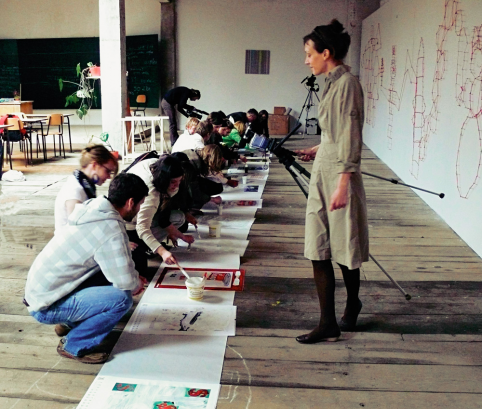








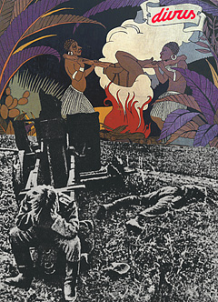






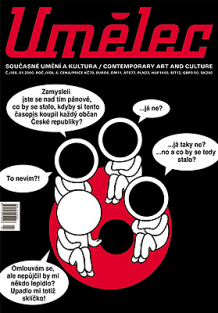





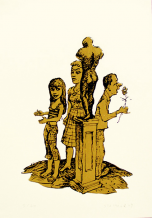
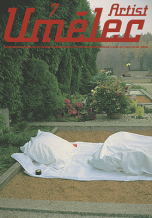
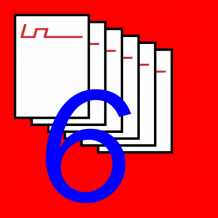


 We Are Rising National Gallery For You! Go to Kyjov by Krásná Lípa no.37.
We Are Rising National Gallery For You! Go to Kyjov by Krásná Lípa no.37.
Комментарии
Статья не была прокомментированаДобавить новый комментарий